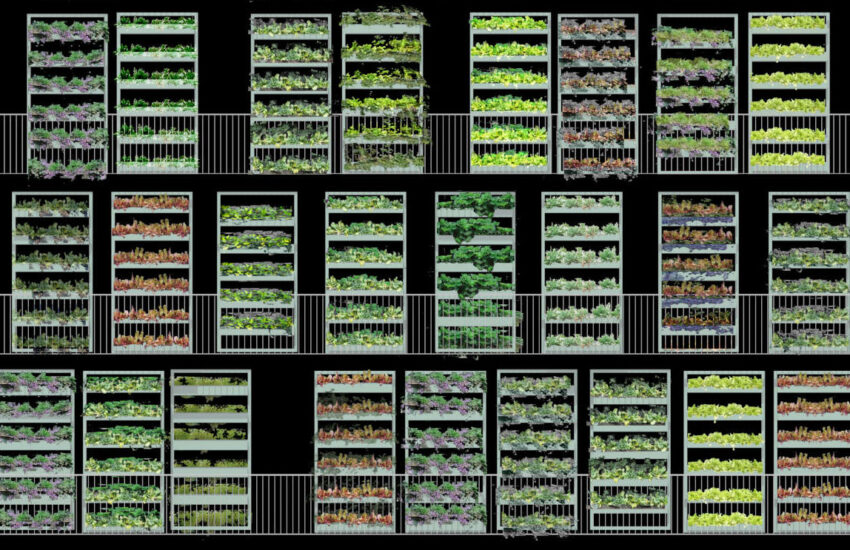Imagine a system that transforms wastewater from an electrical appliance that many of us have in our homes, the dishwasher, into lymph that gives new life and produces vegetables. This is the content of a patent filed in 2019 by the Politecnico di Milano and the Università degli Studi di Roma Tor Vergata in collaboration with a number of companies.
The idea is to develop a system which can be associated with a dishwasher to regenerate its wastewater which can be reused in subsequent wash cycles and also to water vegetables. The dishwasher wastewater, regenerated using a specially designed biofilter, would help the plants to grow thanks to the mineralized nutrients it contains.
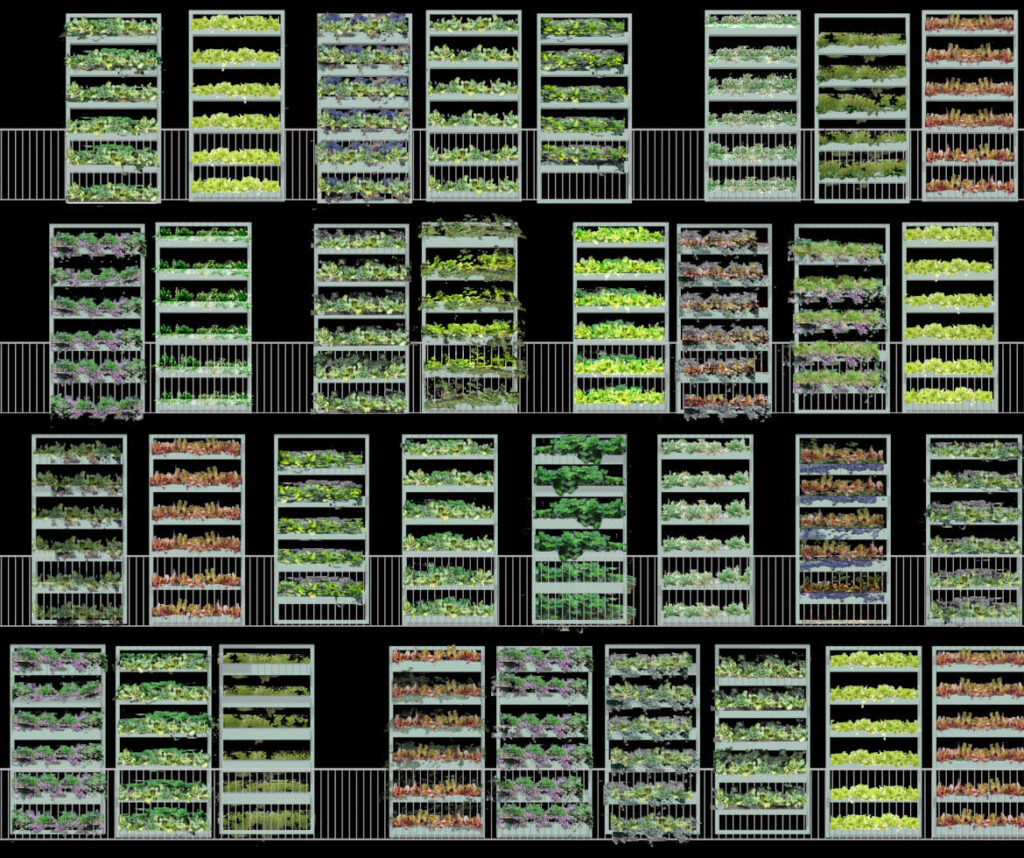
How was this patent conceived?
The idea came from a research group in our Department of Design, and a group of biologists at the University of Tor Vergata. It involved thinking of a way of recycling wastewater from electrical appliances and reusing it.
The idea focused on dishwashers for two main reasons. First of all, dishwashers wash dishes that have food residue on them which can become fertilizer for plants because it is organic.
Then, compared with an aquarium, for example, a dishwasher generates a standard amount of wastewater and detergent with predictable levels. So the amount of water used for each cycle is the same if you use the same programme. Even the detergent is a factor that can be more easily controlled because a pre-dosed tablet is usually used.
The applications
The concept is based on a domestic environment. The system is capable of recycling wastewater from the wash and rinse cycles of a dishwasher using a filtration system and redistributing the water. Some of the purified product is sent to a vertical garden to water the plants and some returns to the dishwasher and is used in the next cycle.
How it works
The main components are:
- the vegetable cultivation and watering system;
- a first tank containing the dishwasher wastewater;
- a biofilter that transforms the organic component of the wastewater into an inorganic component which contains nutrients for the vegetables;
- a second tank containing the treated liquid which will then be reused in subsequent wash cycles;
- a pumping device which can supply the vegetable watering system with the treated liquid or the second tank if not needed for the watering system;
- a second filter and a second pumping device used to respectively filter and supply liquid in the second tank to a dishwasher water inlet.
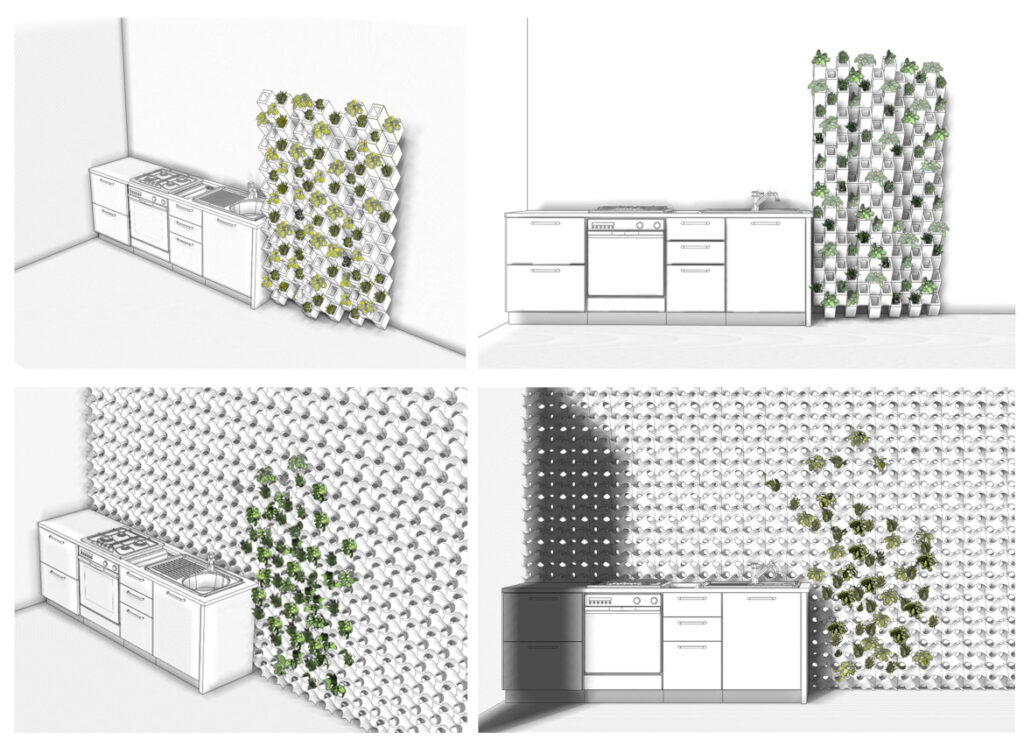
The prototype that has been developed has a biofilter that works with small amounts of water. The researchers are performing a series of experiments to develop one that can process approximately 10 litres of water in one day, the amount of water, on average, that a dishwasher uses for each cycle.
At the same time, a system has been designed, in collaboration with Ka We srl, that connects the dishwasher to the filter. On a practical level, two tanks are required because the water is hot when it comes out of the dishwasher and must therefore cool down before it is treated in the biofilter and stored for subsequent watering. It is a fairly complex system with several valves, pumps and tanks.
The subsequent stage is that of the watering system which has valves so that you can decide whether to use the water for watering or reuse it in a subsequent dishwashing cycle.
In the prototype, the watering system is vertical and is therefore perfect for small vegetable gardens in the kitchen.
Future developments
In the future, the idea is to use the system in more extensive areas: allotments, collective catering (restaurants, canteens, agriturismos) and extreme environments (mountain shelters, space applications). This will all depend on the amount of surface area available inside and out.
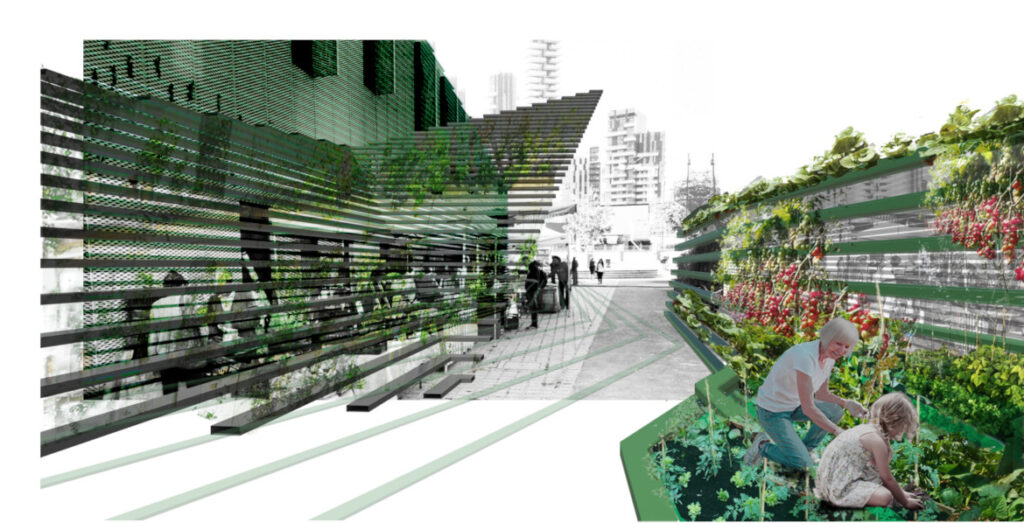
Benefits
The system is an excellent example of how circular economy principles can be applied and sustainable behaviour encouraged.
The most important benefit is that it significantly reduces the amount of drinking water used for washing: the wastewater is used for subsequent wash cycles and to grow vegetables directly in the kitchen at zero mileage and ornamental plants which improve air quality while reducing, at the same time, the environmental costs of traditional food transportation.
A device of this type can also be used to integrate different types of product in one single system used to treat wastewater and grow edible and ornamental plants.
The most innovative element is the biofilter
Although large-scale filters already operate using systems with microorganisms, these systems do not currently exist on a smaller scale. Mechanical filters, UV lamps, active carbon, etc. continue to be used. The use of bacteria applied on this scale is the most promising innovation.
The secret of this biological filter lies in the cyanobacterium Trichormus variabilis VRUC168 and in the heterotrophic bacteria of the wastewater, placed ad hoc in a closed system: the first produce oxygen whereas the others mineralize the organic component.
The possibility of extending the system to the washing machine
This electrical appliance also uses more or less the same amount of water for each cycle as well as the same amount of detergent. However, a washing machine uses much more water and everything is therefore much bigger to handle. Washing machine detergent is also harsher than dishwasher detergent and research into this application is proving to be an interesting challenge.
The long-term objective will be to apply the principles of this patent to the whole kitchen and perhaps all the grey waters, with the black waters excluded obviously.
Who is in the team that proposed the patent?
For the Politecnico di Milano, the project is led by Fiammetta Costa of the Department of Design with Attilio Nebuloni, Giorgio Buratti and Matteo Meraviglia in the team. The Department of Civil and Environmental Engineering has collaborated with Manuela Antonelli.
The biologists from the Università di Roma Tor Vergata, led by Luciana Migliore, and the agronomists from the Università degli Studi di Milano coordinated by Antonio Ferrante have been vitally important to project development.
Companies such as Verde Profilo, Ka We, Meg and Spinitalia have also been involved. For the final product, contacts have been established with manufacturers of sustainable detergents and well known makes of dishwasher who are interested in the water recovery aspect.
Development of the patent
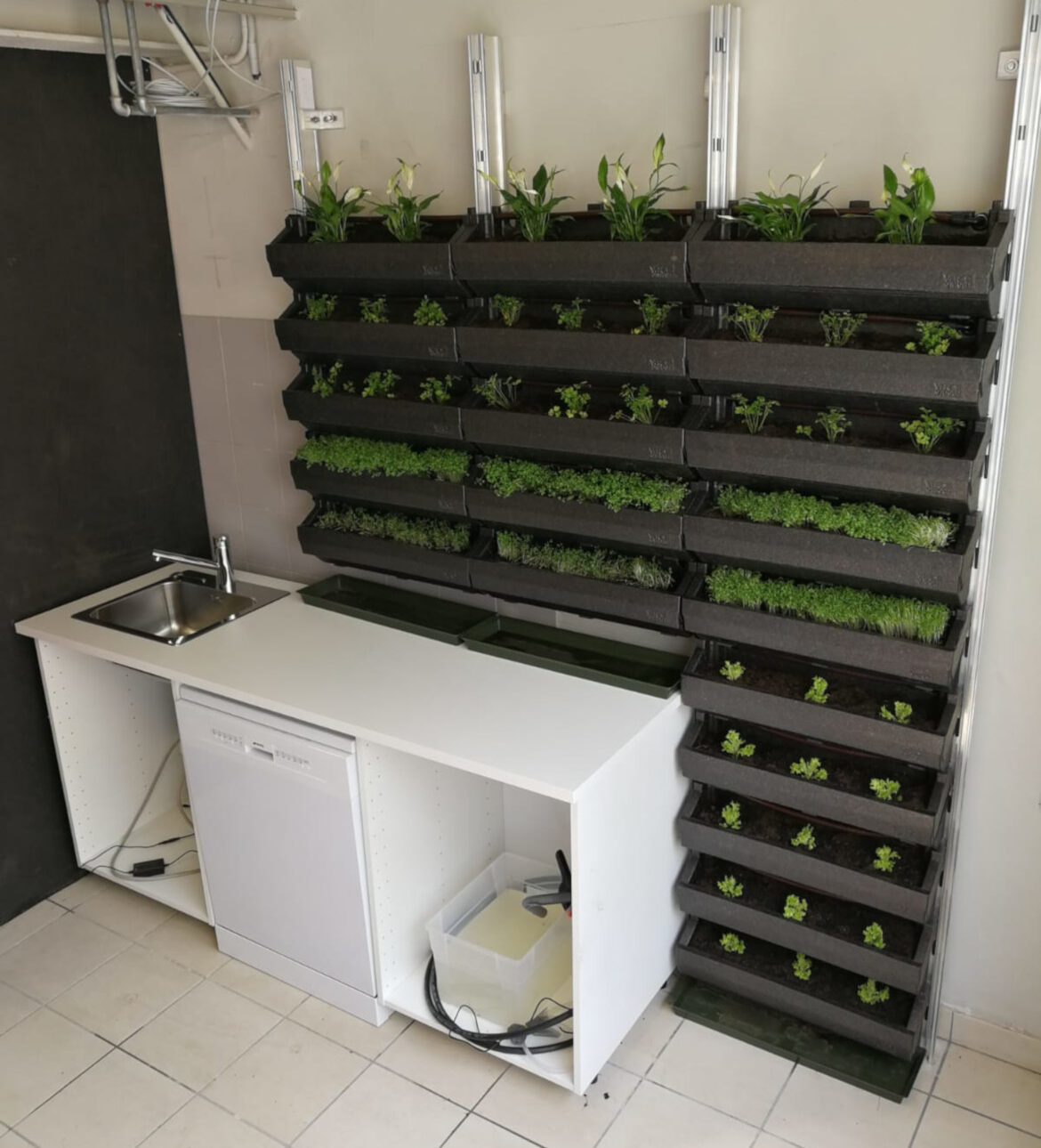
We are currently experimenting with a working prototype and it is not yet available to consumers.
One of the purposes of scientific research is to produce results that benefit society. Research results are the intellectual property of our University and can be protected by patents. The patent is the right to produce, use and exclusively market an invention – a new idea that has an industrial application – for a maximum of 20 years.
Every year, at Politecnico di Milano there are about 200 technological inventions that aspire to become patents. About half of them cross the finish line. Technological research is the purview of the Technology Transfer Office (TTO), whose mission is to support researchers, students, and teaching staff transfer scientific knowledge from the laboratory to the market.
At Frontiere, we have thought of a monthly column to understand how, each year, the best ideas envisioned on Politecnico University’s desks and laboratories are brought to fruition. And how they might affect our future.

